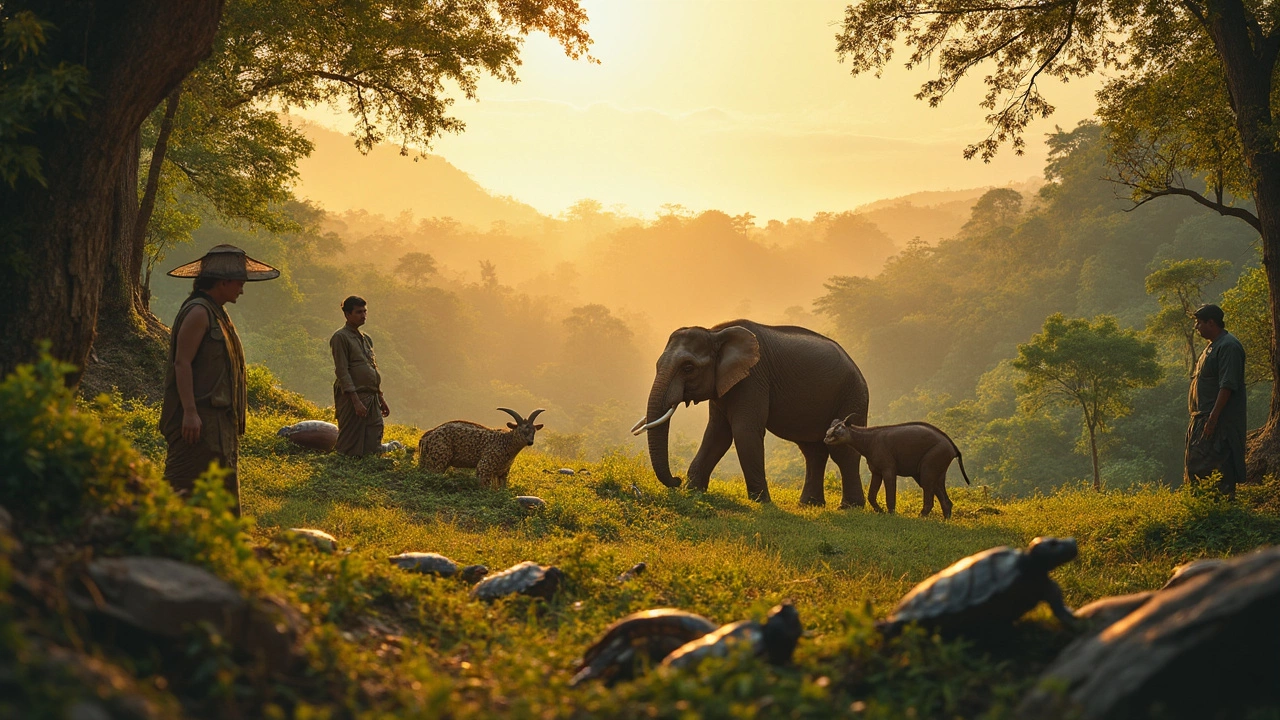Types of Sanctuary Animals: Discover India’s Protected Wildlife
When you think of sanctuary animals, wildlife protected by law in designated areas where human activity is restricted to ensure survival. Also known as wildlife reserves, these zones are lifelines for species that can’t survive outside their natural habitats. India is home to some of the most diverse sanctuary animals on Earth—each one playing a critical role in keeping ecosystems balanced.
Among the most famous are tigers, the apex predators of India’s forests, hunted to near extinction but now recovering thanks to Project Tiger. Over 3,000 tigers live in protected areas like Bandhavgarh and Corbett, where anti-poaching patrols and community programs have turned the tide. Then there’s the Asian elephant, a gentle giant that roams sanctuaries like Periyar and Kaziranga, migrating across hundreds of kilometers and requiring vast, connected forests to survive. These animals don’t just live in sanctuaries—they shape them. Elephants clear paths through dense brush, letting smaller creatures move freely. Tigers keep deer and wild boar populations in check, preventing overgrazing.
But sanctuary animals aren’t just the big, flashy ones. India’s protected zones shelter over 1,300 species of birds, including the critically endangered Siberian crane, a migratory bird that flies thousands of miles each year to wetlands like Keoladeo National Park, where it finds safe feeding grounds. You’ll also find the elusive Indian leopard, a quiet survivor that adapts to forests, hills, and even the edges of villages, and the rare one-horned rhinoceros, found only in Assam’s Kaziranga, where conservation efforts brought it back from fewer than 100 individuals in the 1900s to over 2,600 today. Even the humble Indian pangolin, a scaly, nocturnal mammal hunted for its scales, now finds refuge in sanctuaries across central and southern India.
These animals don’t just exist in isolation. Their survival depends on the health of the entire ecosystem—rivers, trees, insects, and even the soil. That’s why protecting sanctuary animals means protecting the land they live on. It’s not just about saving one species; it’s about keeping whole landscapes alive.
What you’ll find in the posts below are real stories from travelers who’ve seen these animals up close—in the misty hills of the Western Ghats, the grasslands of Madhya Pradesh, and the wetlands of Odisha. Some describe the thrill of spotting a tiger at dawn. Others talk about the quiet awe of watching elephants bathe in a river. You’ll read about how tourism helps fund conservation, and why some sanctuaries are better to visit in winter than summer. These aren’t just travel tips—they’re lessons in how to care for the wild, even when you’re just passing through.
What Animals Can Be in a Sanctuary: Wildlife That Finds Refuge
Curious about which animals end up in a sanctuary? This article explains the types of wildlife sanctuaries take in, from big cats and elephants to local reptiles and rescued farm animals. Learn why these species need sanctuary life, get surprising facts about their care, and discover what makes their new homes so unique. Whether you love lions, turtles, or even goats, you'll get the real scoop on their stories. Plus, there are tips for visitors who want to see these animals safely and responsibly.
Read more